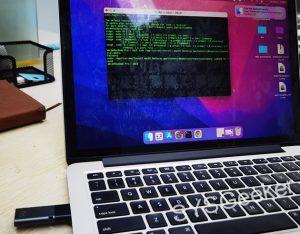Table of Contents
If you are an iPhone user, you have probably encountered a situation where you take amazing photos on your iPhone, but you want to transfer them to your Mac for editing or storage. It can be a frustrating experience trying to figure out how to do this correctly, especially if you are not tech-savvy. In this article, we will guide you through several methods you can use to transfer pictures from iPhone to Mac with minimal stress and hassle.
Video Tutorial:
What’s Needed
Before we delve into the methods, here are a few things you’ll need:
– iPhone and Mac
– USB cable for your iPhone
– Wi-Fi network for some methods
– iCloud account for some methods
What Requires Your Focus?
Transferring images from iPhone to Mac can be a daunting task, especially if you have hundreds of photos. You have to focus on the following:
– The method that suits your needs, budget, and space available
– File types that you need to transfer
– Volume of pictures you have and the amount of storage space you have on both your iPhone and Mac
– Your internet speed if you want to use methods that involve the cloud or Wi-fi
Method 1: Using the Photos App
The Photos app is an inbuilt app on your Mac that enables you to transfer photos from your iPhone. Here’s how to do it:
1. Connect your iPhone to your Mac using a USB cable.
2. Open the Photos app on your Mac.
3. Your iPhone will appear under the “Devices” tab on the left side of the screen.
4. Select the “Import All New Items” button to transfer all new photos added to your iPhone since the last time you imported.
5. Alternatively, select the individual photos you want to transfer and click on the “Import Selected” button.
6. When the import is complete, the Photos app will ask you if you want to delete the photos on your iPhone. If you do, click on the “Delete Items” button.
Pros:
– It’s a built-in app on your Mac, so you don’t need to download or install anything.
– Photos are automatically organized into folders based on date and location.
– You can select the photos you want to transfer easily.
Cons:
– May not be suitable for large numbers of files.
– Transfers can be slow, especially for large files.
Method 2: Using AirDrop to transfer photos
AirDrop is an Apple feature that enables the transfer of files wirelessly between your iPhone and Mac. Here’s how to do it:
1. Turn on Bluetooth and Wi-Fi on both your Mac and iPhone.
2. Open the Photos app on your iPhone.
3. Select the photos you want to transfer and then click on the “Share” button.
4. In the share options that appear, locate the AirDrop icon and click on it.
5. Select your Mac from the list of devices available.
6. Accept the transfer on your Mac.
Pros:
– It’s wireless, which means you don’t need any cables.
– It’s fast and efficient.
– You can transfer large files without worrying about storage space.
Cons:
– You need reliable Bluetooth and Wi-Fi connectivity.
– It’s not suitable for transferring a large number of files.
Method 3: Using iCloud Photo Library
The iCloud Photo Library is a cloud-based service that syncs your photos among your iPhone, Mac, and other devices. Here’s how to use it:
1. Turn on iCloud Photo Library on your iPhone and Mac.
2. Wait for the photos to sync between your iPhone and Mac.
3. Open the Photos app on your Mac, and you’ll find the synced photos in the "All Photos" section.
4. Click on the individual photos you want to transfer or use the "Export" button to export all photos to a folder on your Mac.
Pros:
– It’s efficient for large volumes of photos.
– It automatically syncs your photos across all devices.
– The photos are securely stored in the cloud, reducing the risk of losing them.
Cons:
– Requires a reliable and fast internet connection.
– Uses storage space on iCloud, which may need to be upgraded at an extra cost.
Why Can’t I Transfer Photos from iPhone to Mac?
1. Outdated software on your iPhone or Mac – You need to make sure that you have the latest version of the operating system for your devices.
2. Broken USB cable – If your USB cable is damaged, it may not work correctly.
3. Incorrect USB port – Make sure you are using the correct USB port on your Mac.
4. The Photos app is not open – You need to open the Photos app on your Mac to import your photos.
5. Your iPhone is not set to trust your Mac – You need to confirm that you trust your Mac to connect to your iPhone via USB.
Implications and Recommendations
Transferring photos from iPhone to Mac is essential, especially if you’re a professional photographer or a social media influencer. It ensures that you have a backup of your images if something happens to your device. Here are some recommendations and implications to consider:
– You should always have a backup of your images in case of device loss or damage.
– Frequent photo transfers reduce the load on your device’s storage and improve its performance.
– You should always ensure that you have sufficient storage space on your iPhone and Mac before transferring photos.
FAQs
Q: Can I transfer photos from iPhone to Mac without using cables?
A: Yes, you can transfer photos using AirDrop or iCloud Photo Library.
Q: Why is my iPhone not connecting to my Mac?
A: Ensure that you have updated software on both your iPhone and Mac, that you are using the correct USB port, and that you confirm trust when connected.
Q: Can I use my Mac to delete photos from my iPhone?
A: Yes, you can use the Photos app on your Mac to delete photos from your iPhone.
Q: What do I do if the transfer fails?
A: Retry the transfer, ensure that you have reliable internet connectivity or a reliable cable, and ensure that the Photos app is open on your Mac.
Q: Will my photos lose quality during transfer?
A: No, the quality of your photos will remain the same during transfer.
In Conclusion
Transferring photos from iPhone to Mac is necessary to free up storage space on your iPhone or to edit or use the images on your Mac. You have different options such as the Photos App, AirDrop, and iCloud Photo Library, each with its pros, cons, and requirements. You should choose the method that works best for you and focus on the details needed for the successful transfer of your photos from your iPhone to your Mac.

